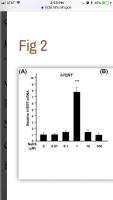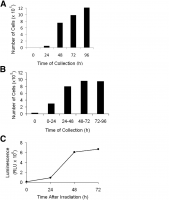NAD-TERT
Using NAD+ and Resveratrol for Telomerase activation
This thread is to draw together mine and others’ research on resveratrol, Sirtuins, NAD and telomeres. I now believe we can rejuvenate cells and possibly ourselves by combining NAD uplift (using NAD precursors, NAMPT and AMPK) and telomerase activation via SIRT4 using a bioavailable form of resveratrol.
I have placed this thread in under the Telomeres Subforum because I believe that it is telomerase that is key to rejuvenating cells beyond that achieved by raising NAD alone. It could equally be placed under resveratrol or NAD subforums, however. It is my decision to place it here however, partly to draw attention back to the importance of telomeres, whilst arguing that extending telomeres, particularly using this method (via Sirtuins) is not a route to cancer but to youth.
The protocol is still very much under development. But early signs are promising.
Rejuvenation is via NAMPT, NAD, SIRT 4 and HTERT
The key finding of this thread is that increasing NAD+ (either directly or via NAMPT) is a necessary but not sufficient step for cellular rejuvenation. A combination of a NAD and/or NAMPT booster with resveratrol however permits SIRT4 to use elevated NAD to re-activate telomerase in cells.
We know that if you raise NAD, this is used by the body for various processes to repair and protect our DNA and cells. It is the specific hypothesis of this thread that SIRT4 (and to a lesser extend SIRT1) can use NAD to reactivate telomerase when prompted by Resveratrol, and that this offers benefits beyond increasing NAD alone.
Here is the research evidence followed by my personal experiences with this protocol, which I call NAD-TERT
References
Resveratrol has been shown to be able to rejuvenate cells in vivo at low doses via modulation of splicing factors and re-extension of telomeres.
Ref: https://bmccellbiol....2860-017-0147-7
Resveratrol has been shown to reduce endothelial progenitor cell senescence through HTERT (telomerase) activation
Ref: https://bpspubs.onli...38/bjp.2008.272
Resveratrol has been shown to have different effects on early and late passage mesenchymal stem cells, and this is mediated by the presence or absence of SIRT1
Ref: https://www.scienced...006291X1530721X
Resveratrol appears to exert its effects on HTERT via SIRT4
Ref: http://www.oncotarge...580&path[]=7251
This last paper shows that SIRT4 is dependent on NAMPT. But lower doses of resveratrol can raise telomerase levels without raising NAMPT, suggesting background levels of NAMPT can be used up by this process. This suggests that the short term upregulation of HTERT seems to be due to the non-sustainable rise of NAMPT produced by dosing with resveratrol alone.
Other supplements can more sustainably increase NAMPT, for example Hydrogen sulphide (which can be induced in cells by allicin supplementation).
Ref: https://journals.plo...al.pone.0164710
Note H2S was more effective at boosting NAMPT than Resveratrol but less effect at boosting HTERT, probably because it acts primarily through SIRT1 not SIRT4
Sinclair et al. has also recently shown that the benefits of a H2S donor are additive in mouse studies using NMN
Ref: https://www.cell.com...?code=cell-site
Linking this back up to splicing factors, H2S donors alone also were able to achieve partial rejuvenation of old cells
Ref: https://www.ncbi.nlm...les/PMC6075431/
and that this is achieved by upregulating SRSF2 (and one other) splicing factor, which is interesting as this splicing factor is within 10MB of the telomere on chromosome 17 and likely affected by the shortening of the telomere via the Telomere Position Effect over long distance (TPE-OLD)
https://onlinelibrar...1111/acel.12646
https://journals.plo...al.pbio.2000016
Methylene Blue can postpone cellular senescence via boosting NAD (but not NAMPT), so this might also be a synergist pathway with the action of resveratrol and Allicin.
Ref: https://www.scienced...213231715001159
(Note: other NAD precursors may also be as or more effective, but in my experience this has not been the case).
Personal experience
I am a 39 year old male with no major health issues.
All the findings reported or conclusions drawn below are to be considered highly provisional.
I took 2 drops (~1mg) of Methylene blue for the first time in 2 months. This was in addition to my normal AM supplements that include Allicin, Vitamin C and Ashwaghanda. Within 4 hours I felt unusually fatigued and had a headache. The experience was similar to using Turnbuckle’s mitochondrial fission Nicotinamide and Ribose protocol for the first time (https://www.longecit...drial-dynamics/ ), but which has subsequently and even recently failed to elicit the same effect, even when combined with the same supplements. I have not experienced this fatigue when using MB alone.
As my headache grew worse I decided to try and trigger mitochondrial fusion by ingesting 20g of fish oil (ref: https://www.ncbi.nlm...les/PMC3963938/ ). I gave it two hours to work but the effect was minimal. I lay down for a rest. Letting my mind wonder over various papers I’d read recently the potential synergy of resveratrol with high NAMPT/NAD occurred to me. I took 10ml (180mg) of liposomal resveratrol from Actinovo that I had lying about. This liposomal resveratrol supplement had not previously produced any significant positive results, and I had taken it at various doses from 180mg to 4 g a day.
Within 10 minutes not only did I feel better, but I felt euphoric. I ran down the stairs and played with my kids in the garden with a renewed and fresh energy. I continued to feel fantastic for the rest of the day. That night I vigorously made love to my partner (we are sexually active but this an unusual enough event to comment on).
The following day I again took 1mg of MB with my normal AM supplements. I again grew fatigued by early afternoon, but only had the beginnings of a headache. I lay down for a rest, intending to take resveratrol as soon as a headache set in, but I fell asleep for several hours. When I woke I remembered to take the 180mg liposomal resveratrol. I again felt restored and fresh but the effect was less pronounced than on the previous day. Perhaps the sleep had already restored me, or the NAD/NAMPT levels had begun to fall.
The following and third day of treatment I once again took MB with my morning regime. Because I was to be out all day I took the liposomal resveratrol only 1 hour later; I had not yet begun to feel fatigued. I did not experience the fatigue or the headache induced previously, but neither did I experience an obvious boost or euphoria. I was able to drive for 4 hours that day without more than slight fatigue, and I did note that my skin looked unusually good that evening, in particular some small but annoying cysts that had appeared over the previous year on my left cheek were reduced in size.
After a week’s break I intend to repeat the protocol with various changes to determine to best combinations. I will continue to report back in this thread.
Many others here have been experimenting with various NAD, NAMPT and AMPK boosters, with and without resveratrol, whether liposomal or not, with various timings. It would be great to see if we can work out what the best combinations are.
Edited by QuestforLife, 04 September 2018 - 03:27 PM.



























































